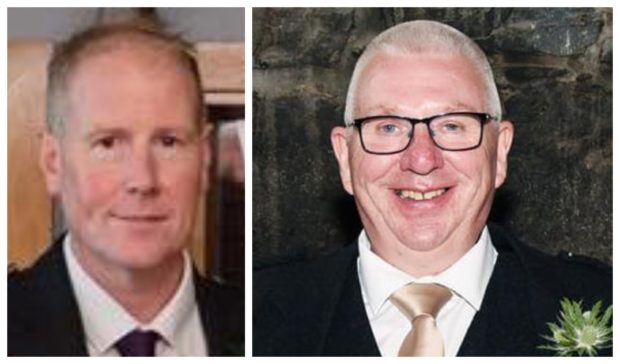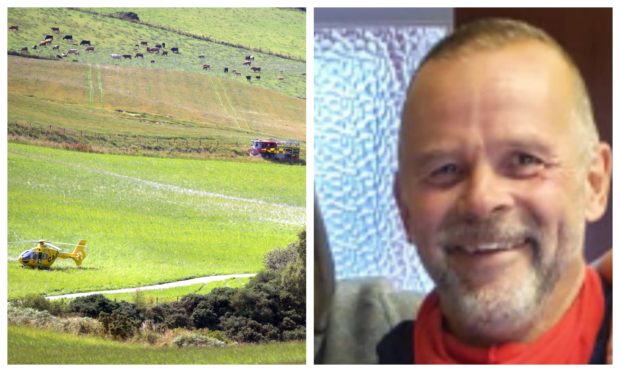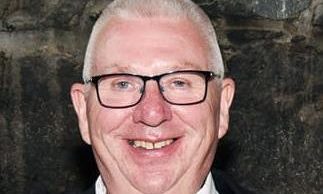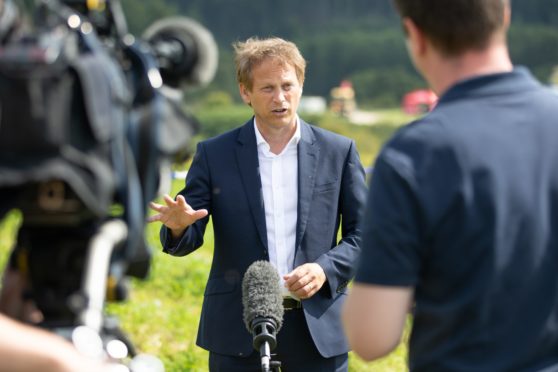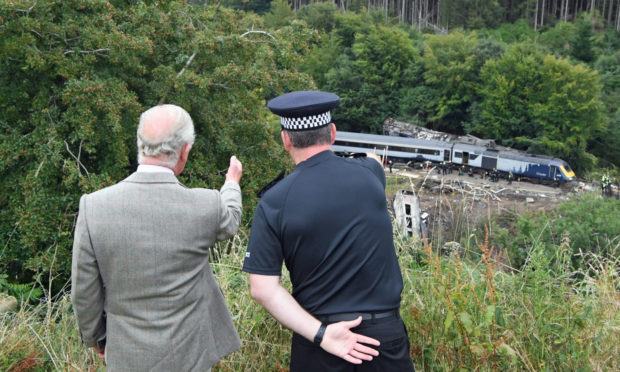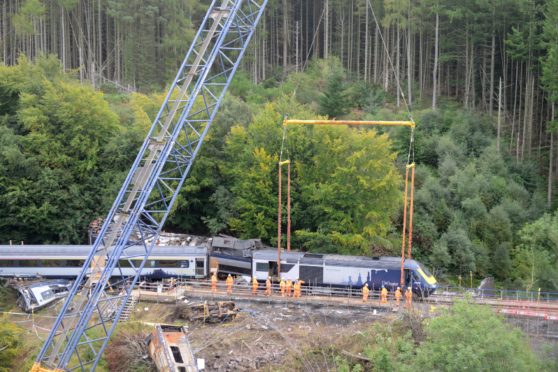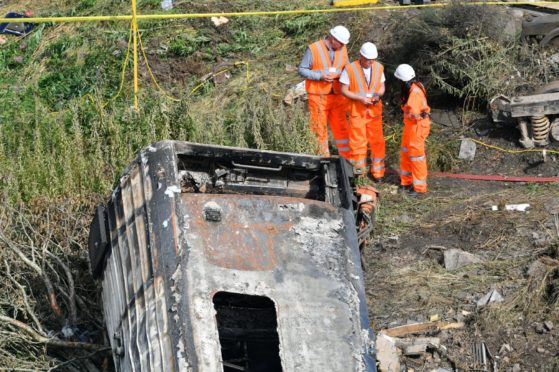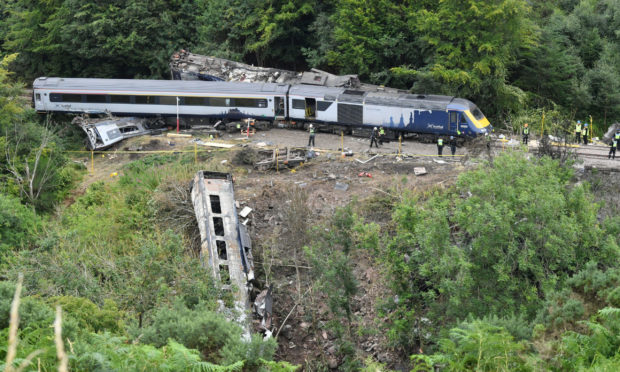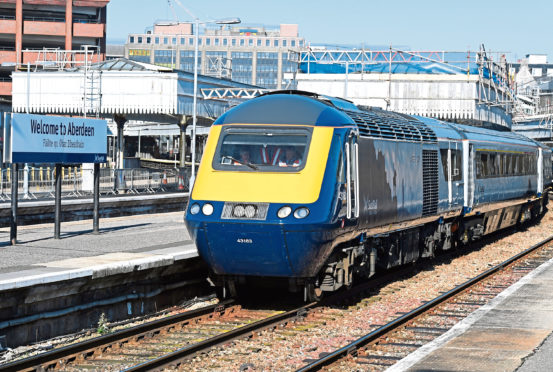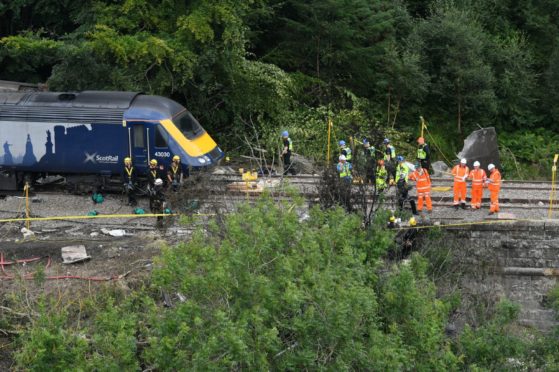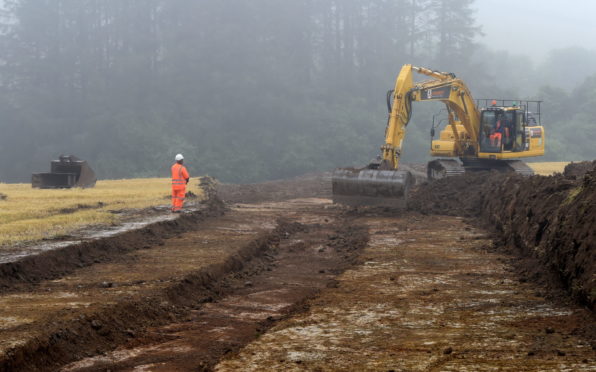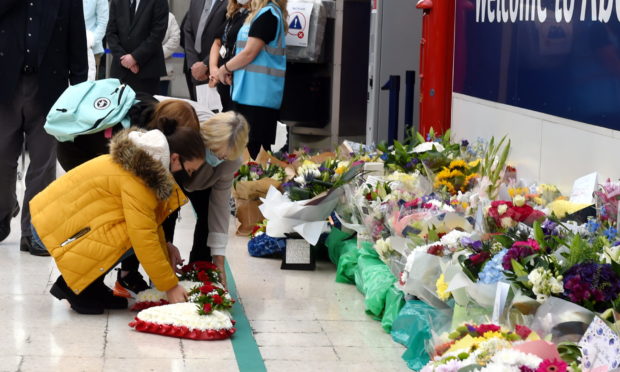The train involved in Wednesday’s Stonehaven rail tragedy struck a landslip and derailed, rail investigators revealed today.
Three people died after the Aberdeen to Glasgow Queen Street service crashed south of Stonehaven.
Train driver Brett McCullough, conductor Donald Dinnie and passenger Christopher Stuchbury were all killed in the incident.
Six people were injured, with two of them remaining in hospital in stable condition.
The leading power car and third passenger carriage fell from the railway down a wooded embankment after striking a section of bridge parapet which was destroyed.
In a report published by the Rail Accident Investigation Bureau, it was revealed that the 6.38am Scotrail service from Aberdeen to Glasgow was forced to turn back after Stonehaven due to bad weather conditions.
How the crash unfolded
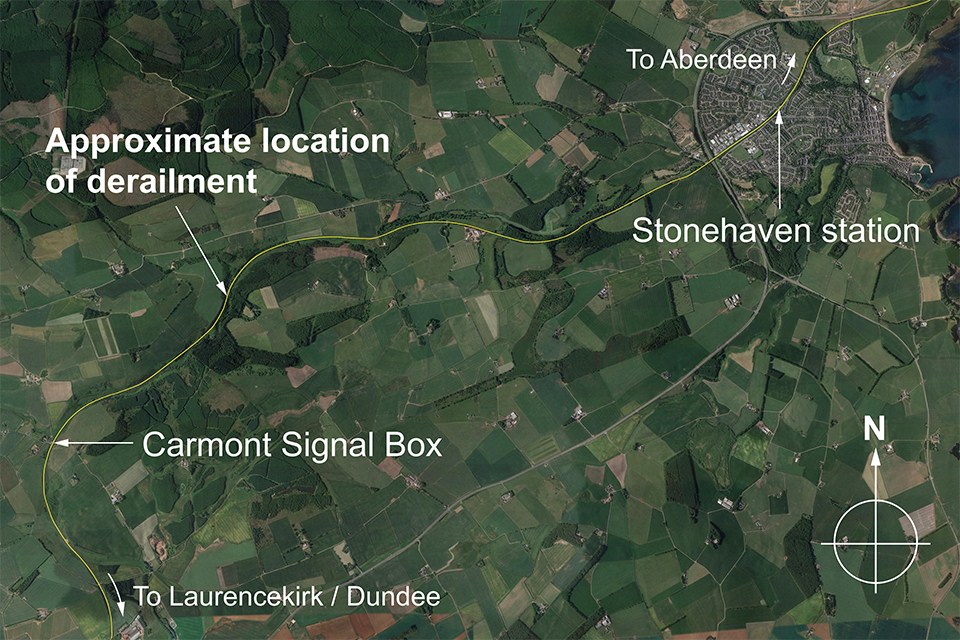
- The train left Aberdeen at 6.38am, and departed Stonehaven on time shortly after.
- After heading southbound the train was stopped near Carmount after a radio message from the signaller after a train heading north reported a landslip blocking the line between Carmont and Laurencekirk.
- The train was instructed to return to Aberdeen
- After travelling 1.4miles back towards Stonehaven the train struck a landslip.
- As the line curved to the right, the train continued in a straight line for around 90 metres until it hit a section of the bridge parapet, which was destroyed.
- The leading power car continued over the bridge and down a wooded embankment along with the third passenger carriage.
- The first passenger carriage came to rest on its roof, having rotated to be at right angles to the track.
- The second passenger carriage also overturned onto its roof and came to rest on the first carriage.
- The fourth passenger carriage remained upright and attached to the rear power car; it also came to rest on the first carriage.
- A Network Rail spokeswoman said in a statement the control centre was alerted to the fatal derailment in Aberdeenshire in under 10 minutes.
A statement from the RAIB said: “We are currently collecting evidence needed to identify factors relevant to the cause of the accident and its consequences. The scope of the investigation is likely to include:
- The sequence of events and the actions of those involved
- The operating procedures applied
- The management of earthworks and drainage in this area, including recent inspections and risk assessments
- The general management of earthworks and drainage and associated procedures designed to manage the risk of extreme weather events
- The behaviour of the train during, and following the derailment
- The consequences of the derailment and a review of the damage caused to the rolling stock
- Underlying management factors
- Actions taken in response to previous safety recommendations
“We will publish our findings, including any recommendations to improve safety, at the conclusion of our investigation.”
The Network Rail statement said: “When it came to the accident being notified, it was a matter of minutes, but not immediate.
“We don’t yet have the complete picture but I can say that any suggestion there were hours between the derailment occurring and the control centre being alerted, is categorically untrue.
“It was certainly less than 10 minutes, at a time when an awful accident had occurred, fatally injuring both members of the operational train crew, in a remote rural location with poor mobile reception (but not no signal, there was no blackout), and in horrendous weather.”
